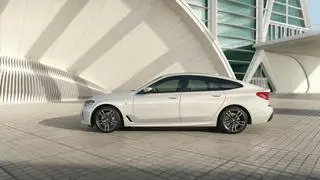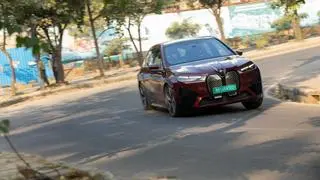It is the iconic Italian car designer that has been associated with top brands such as Ferrari, Alfa Romeo, Cadillac and Maserati. Today, it is part of the Mahindra group after M&M and Tech Mahindra acquired 76 per cent stake in 2015. Pininfarina’s CEO, Silvio Pietro Angori, was in India recently and spoke to BusinessLine in an exclusive interview.
How has the new ownership with Mahindra helped Pininfarina?
The acquisition has brought us the much needed financial stability. The past few years have been difficult as we have had to change ourselves and reinvent our business model. We have now opened up new business opportunities and are preparing to be in a leading position in the market segments we compete.
With Tech Mahindra being a B2B company, how does Pininfarina fit in?
What is not best known is that Tech Mahindra has a division called Integrated Engineering Services, which caters to B2B industries. Pininfarina is a service company and we have our own engineering department, which is more than two-thirds of the company. This is the common ground and this is how we will go to the market with Tech Mahindra.
When you put together these two entities, Tech Mahindra and Pininfarina, we are among the ten largest, in terms of revenues, almost $450 million that puts us in a high rank globally in terms of engineering service providers.
What is design language all about by the end of the day?
The design concepts of a brand reflect its current vision. The (design) language evolves with time and the pace of change makes a difference. If you look at what Pininfarina does and why it is so celebrated, it is because at a certain point of time we understood or imagined what the future wished or design desires of the market would be. We were able to create those allowing the vehicles and products to stand the test of time and become part of the cult and benchmarks for the future.
Pininfarina is primarily a car designer even though it has designed everything from buildings to yachts. How does this balance out?
We have been looking at other sectors for almost 20 years and created a company called Pininfarina Extra precisely for this purpose. The idea was that whenever and wherever you want to have a product of design that has a certain style, we can design it and apply the principles of our DNA to these products.
We have designed buildings in Sao Paulo, Singapore, Hong Kong and Miami. We have been looking at diversifying for a long time but will continue to be more selective in the products we design.
Coming to India, will you be open to designing cars for other manufacturers?
Whilst the ultimate owner of Pininfarina is the Mahindra group through M&M and Tech Mahindra, we operate as an independent company. We have been designing products in this country for many years and this means there is an association between Pininfarina and India. We will be designing future vehicles for OEMs based here. We also have had other clients in the past such as the Tata Prima luxury sedan, which was showcased at the 2009 Geneva Motor Show.
What would you have to say about the potential of design in commercial vehicles?
It is more than an opportunity. In fact, we are working on that segment of the market. The Shanghai Motor Show had an entire section for minivans whose interiors were even more luxurious than first class airline company!
Getting back to India, how does Pininfarina plan to increase its footprint here?
India is a great market. There is a wonderful book by an Indian writer, Parag Khanna, called Connectography . His theory is that in a connected world, political boundaries do not exist but are only created by lack of connectivity.
Globally, when we think about certain regions, names such as Shanghai and Los Angeles come to mind. When we think about India, we think about Mumbai, New Delhi and other regions, which are the markets of the future. India is such a big market that it is almost a continent in itself. And therefore, when we say we will be focusing on a market we mean we are going to focus on a specific region.
With car ownership under some pressure with mobility options like Uber, does this impact design and creativity?
My opinion is that if you look at the vehicle itself, you will not be able to capture the attention of customers. You will need to see it as part of an overall experience. Certain things like the interiors must be adaptable to the customer. Just like you personalise your iPhone as soon as you buy it, you would want to do the same with a car taking you from point A to B.
So when you call for an Uber through an app to come and pick you up, you will specify what colours of the interior you want to have.
The new technologies and adjustments can offer you an environment that is closer or identical to what you had once when you owned a car. And then you take another car, another Uber and you will find exactly the same things you wished to have. That is what we see changing the future of vehicles because of automation.
In a society or market that tends to equalise everything, in reality you want to have something specific, something different, designed by someone that gives a boost and pleases you. I think that, as more we go along, the more the world will progress and every single object around us will have something special. Each of these will reflect the way we think, live, deal with things and interact with people.








Comments
Comments have to be in English, and in full sentences. They cannot be abusive or personal. Please abide by our community guidelines for posting your comments.
We have migrated to a new commenting platform. If you are already a registered user of TheHindu Businessline and logged in, you may continue to engage with our articles. If you do not have an account please register and login to post comments. Users can access their older comments by logging into their accounts on Vuukle.